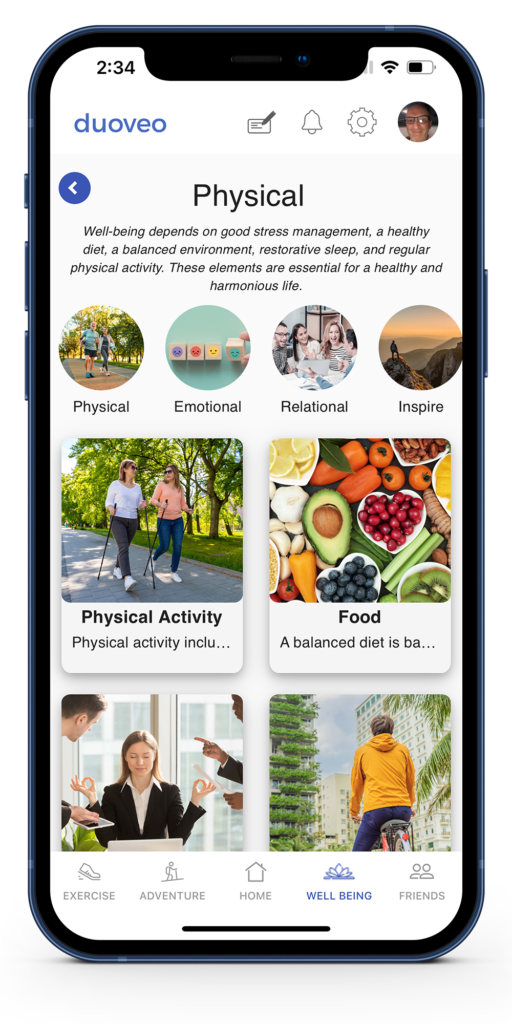You have started monitoring your activity with a fitness tracker or a fitness band, but you wonder how to set goals.
After aiming for the standard “10,000 steps”, you find yourself walking aimlessly for hours at the end of the day only to reach this target. You are frustrated and discouraged.
It is challenging and not inspiring, making you fear that you’ll be giving up.
Is there a way to set goals so that they don’t feel like a chore?
And what if you only do 5,000 steps or less? What is a good goal anyway?
Setting a daily goal is the baseline for anyone who wants to monitor one’s fitness, but it is more complicated than it seems.
I was there too, and I did not suspect the psychological chain reaction daily goals can start — leading me to almost giving up on fitness trackers.
From hero to zero
When I reached 50, I was starting to put on weight. Reading everywhere about muscle loss and belly fat accumulation after 50, I decided to double down on sport and fitness. Activity, after all, is one of the five healthy lifestyle hacks to lose weight after 50. I bought a new fitness band, one that does not need constant recharging, and started monitoring my activity.
I was shocked to see that I was much less constant than I believed, having days with almost no activity.
That bothered me, but, hell, the fix was simple: I just had to set a daily goal of 10,000 steps, as anyone does, isn’t it?
Overconfident
You see, like 93 % of Americans that claim to be better than average, I am overconfident, and I was sure I was on the upper half side for willpower and energy.
So, I programmed my fitness tracker and set to meet the 10,000 steps daily challenge.
At first, I did well. I overshot the goal for the first week, with great satisfaction.
Soon, however, I started missing the daily milestone. I found myself wandering for hours after dark, just to meet the target.
After a few instances of this regime, I told myself: “why am I doing that stupid walk that I don’t even enjoy?” So, I stopped and missed my goal several times.
The willpower blame game
Then my conscience came to blame me, “You are a slacker; you are a loser. Can you not even stick to this simple objective? What? You have no willpower?”.
More than a quarter of Americans believe a lack of willpower is to blame for their failure, and like them, I thought I was being remorsefully weak and lacked commitment.
I was about to give up completely — and throw away this useless fitness band, but then I thought about my real objective: staying healthy. Many people in their 50s drift away from fitness, and becoming fat, sick and unhappy.
I did not want to be like them. The stakes were too high.
10,000 steps are fake news
As an engineer, I like solving problems.
I sat and reflected: What was I doing wrong and right?
First, the right: by reminding myself of my ultimate objective, staying healthy through my 50s, and picturing the dreaded alternative of lack of exercise, I was able to find new motivation.
The way I was trying to achieve this objective, however, was wrong all over. My mistake was to believe in the fitness tracker 10,000-step fallacy.
The magic 10,000 number did not relate to my experience and my actual needs. It was an abstract number. When I missed the target, I couldn’t tell what it meant for my fitness and felt disconnected and uncommitted.
It was clear that 10,000 steps were too much for me, thus my useless wandering at night. I was trying to reach unattainable goals, and it set me up for failure, disappointment, and self-loathing.
I was just discovering something that many people know: the 10,000 step goal has no reality. It is not even a medical prescription: its origin is a marketing campaign for a pedometer sold during the 1964 Tokyo Olympics. It was successful, and the number stuck — go figure.

The compound average method for goal setting
I reconsidered my real objective and had this inner dialogue
“What do you want?”
– “Exercise more”
“More than what?”
– “More than before”
“That’s a good target and easy to measure. What was your average before?”
– “On a week, my average daily steps is 5000, with peaks over 10000, when I go to the gym.”
“Then, let’s start with your average as the target count for your fitness tracker.”
“What?”, would you say. Set the target as your average? What’s the point?
Well, this is simple math. If you perform every day your previous week’s average at least, you will get a new weekly average over your last week’s average.
If you perform every day your previous week’s average at least, you will get a new weekly average over your last week’s average.
Every week, you will set the new daily goal as the previous week’s average, and your activity will increase steadily.
If you know about finance, this is very similar to the compound interest on investment, which makes your investment grow exponentially over time.
That’s why I call this the compound average method. It is just not money, but fitness, that you are earning.
Success that lasts

Once I changed my method, I was able to meet my goal every day, and enjoy a nice dopamine boost of satisfaction, that reinforced my motivation.
Most importantly, I increased my average significantly. It did not go to the roof, not to the 10,000. 7,000 steps seems to be my cruise speed.
And that’s fine. I feel perfectly healthy, and I am controlling my weight nicely.
Exceeding your goals every time
You tried setting fitness goals, but reaching them is hard.
The magic fitness tracker “10.000 steps” is elusive. You feel frustration and guilt.
Luckily, there is a better way to set goals.
Using the method I just described, you can set yourself for success and slowly increase your exercise regiment, building on your achievements. You’ll be amazed at how easy it is to reach your goals, and you’ll feel satisfied and accomplished.
You can apply the same method to other goals, and soon, you’ll set up a routine. And because it fits your lifestyle and your capabilities, you’ll stick to it.
So, forget what others say about goals, and define your own, starting with your last week’s average. It is that simple!

